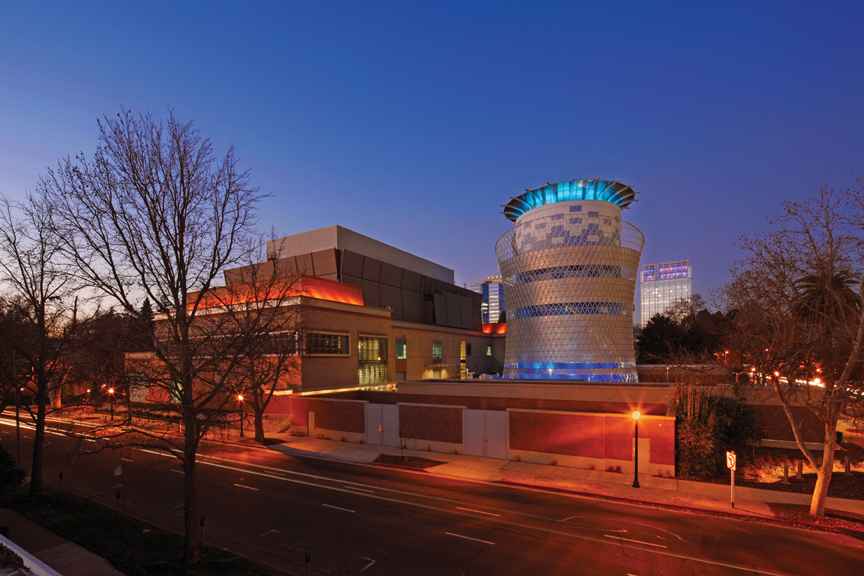The new DGS central plant in downtown Sacramento, Calif., is hiding in plain sight. Local design firm Nacht & Lewis Architects imbued the 78,000-sf facility with a modern design that reduced the building’s bulk and overall height by using canopies on the mezzanine level and locating tall elements, such as the thermal energy storage tank, at the center of the facility.
The tank was also dressed up in a blue and white metal insulation jacket that turns it into a signature decorative element. These aesthetic efforts were not lost on our Building Team Awards judges. “It’s not obvious what it is, but neither are they trying to hide its function,” noted John (Jay) Frisco, AIA, NCARB, an associate with RTKL in Chicago. “It’s not at all the central plant you expect to see.”
The plant replaced an inefficient facility that dated to 1968 and often struggled to meet the state capital’s current heating and cooling demands. Contractor Skanksa USA Building Inc. oversaw construction of the new $181 million facility, which provides chilled water for cooling, steam for heating, and air control to 23 state-owned buildings in the Capitol Building District. The new plant uses 58% less energy and 90% less water than the plant it replaced, and its smaller footprint allowed the Building Team to reclaim land that was turned into a public garden, complete with a landscape feature that reuses water from the plant.
The facility was outfitted with a steam boiler plant with four gas-fired water tube boilers and cooling equipment outfitted with variable-speed electric chillers and cooling towers with a capacity of 16,000 tons of chilled water; future build-out capacity is 19,000 tons. Currently, the facility’s average peak load is 8,000 to 10,000 tons. The cooling tower also eliminates the practice of discharging water into the Sacramento River—a major project goal.
A steam turbine generator was also installed to provide emergency power to the chillers in the event of a power failure. The equipment was selected not only for its operational efficiencies, but also for its low operational noise—the plant sits in the middle of a city, after all. The equipment, including super low-sound cooling tower fan blades, emits less than 85 dBA and a significant portion of the plant’s walls and ceilings are covered in soundproofing material.
The plant’s central administrative area, which is seeking LEED Gold certification, has large windows with sunshades to capture daylight while reducing glare and solar heat gain, a demand-based ventilation control system that uses 70% less energy than current ASHRAE standards, and low-VOC finishes.
Central plant sure doesn’t look the part
Bronze Award: DGS Central Plant







